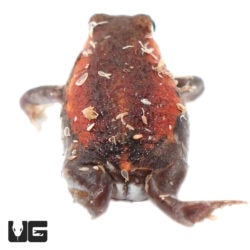Check Out Rain Frog for Sale: Boost Your Animal Game with a One-of-a-kind Amphibian Close Friend!
Check Out Rain Frog for Sale: Boost Your Animal Game with a One-of-a-kind Amphibian Close Friend!
Blog Article
The Very Best Reptile Enclosures: How to Produce the Perfect Habitat
Developing the best environment for reptiles is not almost placing them in a storage tank or unit; it involves a thoughtful consideration of various elements that contribute to their overall well-being. From the dimension of the room to the sort of substrate used, every aspect plays a vital function in offering an atmosphere where your reptile can thrive. By recognizing the certain needs of your reptile varieties and executing the appropriate habitat configuration, you can guarantee their health and happiness in bondage.
Selecting the Right Unit Size
When selecting an enclosure dimension for reptiles, it is imperative to consider their natural habits and room requirements to guarantee their wellness and wellness. When it comes to habitat space, different reptile species have differing requirements. Arboreal species like chameleons or tree snakes call for vertical space for perching and climbing, while earthbound types such as bearded dragons or leopard geckos require even more flooring area for exploring and thermoregulation. Marine turtles like red-eared sliders necessitate enclosures with both water and land areas for swimming and basking.
A basic policy of thumb is to supply sufficient area for the reptile to show all-natural behaviors, such as basking, hiding, climbing up, and foraging. By carefully thinking about the specific needs of the reptile types in inquiry, owners can create a suitable and improving habitat that advertises total wellness and encourages all-natural actions.
Establishing Proper Heating Components
To make sure the wellness and health and wellness of reptiles in their rooms, it is necessary to very carefully set up proper heating aspects. Reptiles are ectothermic animals, indicating they rely on external warmth sources to control their body temperature. When setting up heating elements in a reptile unit, it is essential to think about the particular temperature level requirements of the species you are taking care of. Various reptiles have differing temperature requires based on their natural environment, so it is crucial to study and recognize these needs.
One typical and effective burner for reptile units is a warm light or ceramic warmth emitter. These heat resources can be made use of to develop a temperature level gradient within the enclosure, enabling reptiles to relocate between warmer and cooler locations as required. Furthermore, under-tank hot pad or heat mats can be used to supply stomach warmth, which is specifically advantageous for reptiles that need extra warmth to help in food digestion.
Keeping track of the temperature within the enclosure utilizing a thermostat is important to make sure that the burner are keeping the appropriate temperature variety for your reptile. Consistently inspect and change the home heating elements as needed to develop a comfortable and healthy and balanced environment for your scaly close friend.
Choosing Appropriate Lighting Components

Supplying the Perfect Substrate
Choosing the ideal substrate is essential for producing a appropriate and comfy atmosphere for reptiles in their units. Some reptiles, such as desert-dwelling varieties like bearded dragons, grow on substratums like calcium sand or reptile carpet, while others, like ball pythons, choose coconut husk or aspen bed linen to maintain moisture levels.
Avoid substratums that can trigger impaction, such as loosened substrates like sand learn this here now or crushed rock, directory particularly for reptiles understood to ingest their bedding. Routinely cleaning and changing the substrate is vital to make sure a clean and sanitary setting for your reptile.
Designing for Enrichment and Comfort
Thinking about the substrate's function in supplying a structure for natural habits and maintaining an appropriate setting, improving the reptile room with proper decors is important for both enrichment and comfort. When enhancing the room, it is essential to take into consideration the reptile's species-specific demands and actions to produce a room that promotes mental and physical well-being. By including a selection of designs that simulate the reptile's all-natural environment, owners can ensure their pet dog's comfort and boost their natural impulses, ultimately leading to a happier and healthier reptile.
Final Thought

Producing the excellent environment for reptiles is not simply regarding positioning them in a storage tank or enclosure; it includes a thoughtful consideration of numerous variables that contribute to their total well-being.Picking the appropriate substratum is necessary for creating a comfortable and suitable atmosphere for reptiles in their units. Some reptiles, such as desert-dwelling types like bearded dragons, prosper on substrates like calcium sand or reptile carpet, while others, like ball pythons, prefer coconut husk or aspen bedding to preserve humidity degrees.
By incorporating a variety of decorations you could try here that simulate the reptile's all-natural habitat, proprietors can guarantee their pet's comfort and boost their all-natural reactions, eventually leading to a happier and healthier reptile.
In conclusion, creating the ideal habitat for reptiles entails choosing the proper room dimension, home heating elements, lighting components, substrate, and decors.
Report this page